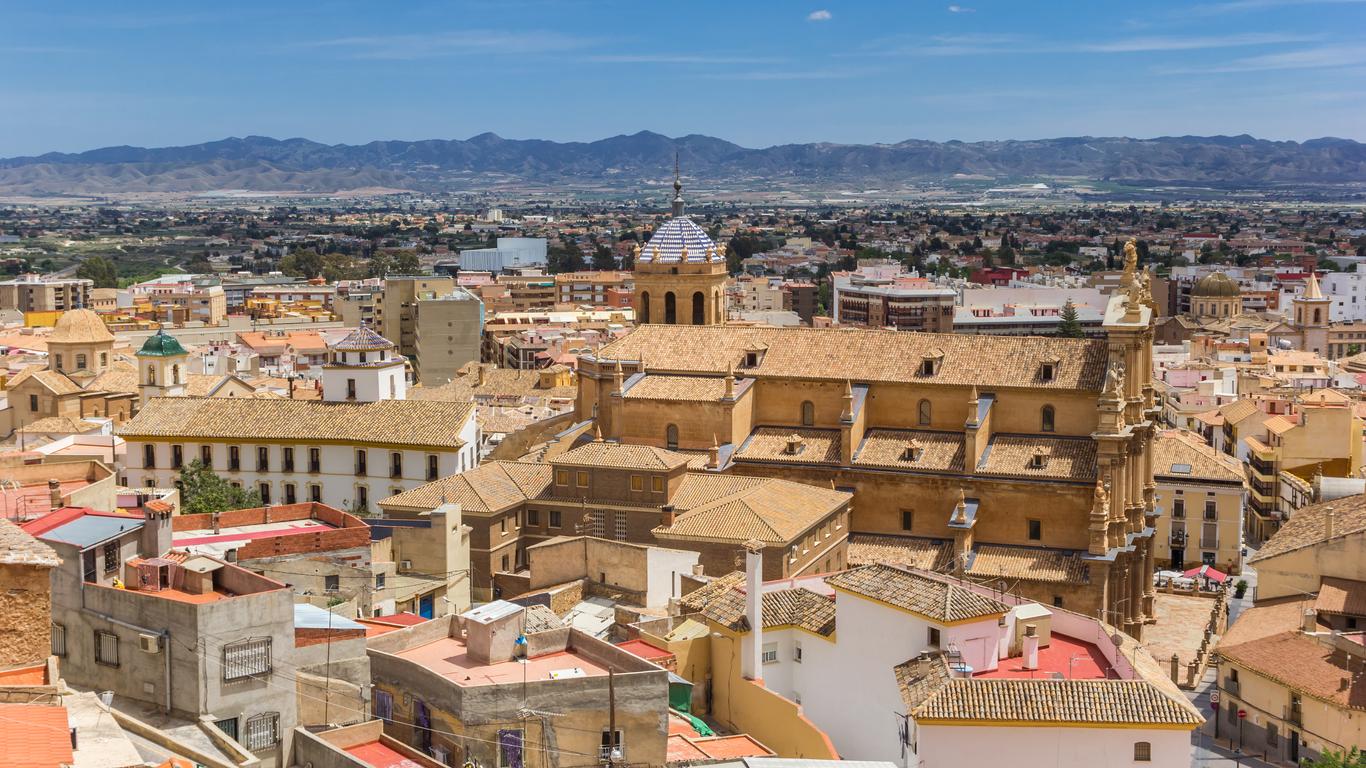Watched over by a medieval castle, Lorca is a historically rich city in the Region of Murcia that has been inhabited since Neolithic times. It was occupied by the Romans as the ancient city of Ilura before being positioned at the frontier between Christian and Muslim Spain during the Middle Ages. In 2011, Lorca was significantly damaged during a magnitude 5.1 earthquake.
Things to do in Lorca
In the heart of Lorca is Plaza de España, a bustling square framed by some of the city’s most important architectural landmarks. Of particular note is the Colegiata de San Patricio, a Renaissance-style church with a Baroque facade. Nearby is the ciuFRONT Museo Medieval, which celebrates Spain’s medieval art history.
Dominating the cityscape is Lorca Castle, a Moorish-built fortification that dates back to the 9th century. Designated as a Site of Cultural Interest, it played an important role in the conflicts between the Christians and Muslims during the Reconquista. Gaze up at the rectangular Alfonsi Tower and admire the Mudejar decorations or coincide your visit with one of the medieval re-enactments that regularly take place here.
History buffs can visit the Archaeological Museum of Lorca, which occupies the early-17th-century House of Salazar. It showcases findings from excavations throughout Lorca and beyond, including objects dating back to the Palaeolithic and Chalcolithic periods. In addition to Copper Age funerary objects and idols from the Glorieta de San Vicente, its collection includes Roman mosaics and columns.
Getting around Lorca
Lorca is just under an hour’s drive from Murcia and Murcia International Airport, which has flights to destinations across Europe and North Africa. Trains connect to the Lorca Sutullena railway station and buses travel throughout the city. The centre of Lorca can easily be explored on foot.





